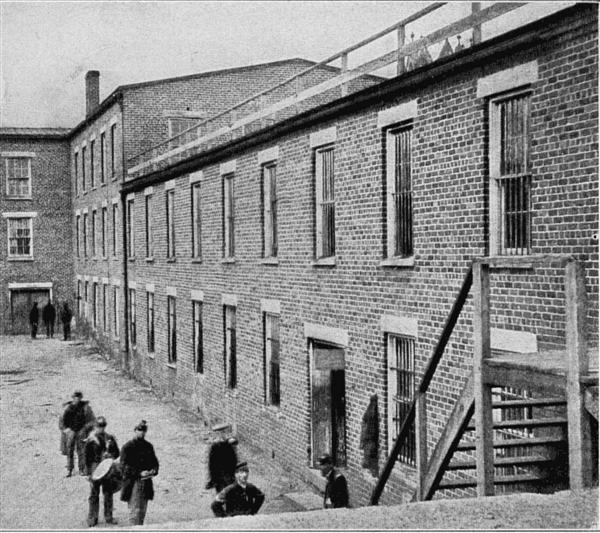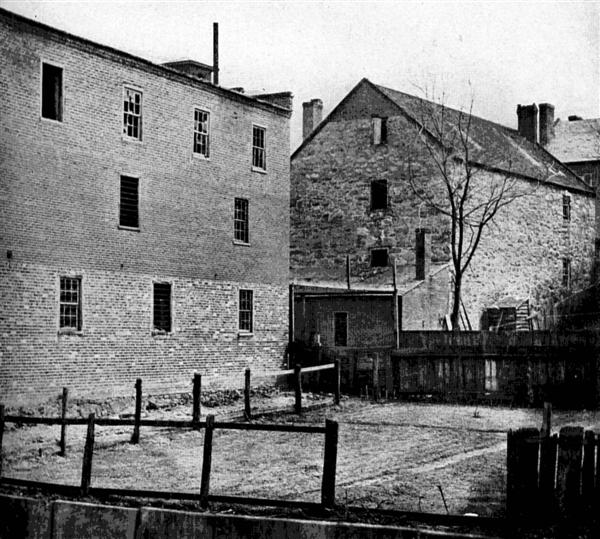|

"Castle Thunder" On April
4, 1865 ‑ A Petersburg Tobacco Factory Used as a Prison
Within the Bombarded Town
These buildings in Petersburg, formerly
tobacco warehouses, had been used, when this photograph was made, for the
temporary confinement of Union soldiers captured during the numerous sorties
of the winter of 1864‑65. On account of the continual bombardment on both
sides and the number of shots which fell within the town, the prisoners who
languished within these walls called them "Castle Thunder." In the South
commercial buildings that already existed were transformed to a large extent
to serve for the detention of prisoners. Tobacco factories were often used
for this purpose; the light and ventilation were good, and comparatively
little machinery was used, so that they could be easily cleared. At "Castle
Thunder" there was but little besides tobacco with which to feed either the
prisoners or their captors. When the Federal troops finally occupied the
city, they found the warehouses full of tobacco and gleefully helped
themselves to it. Not a single source of supply of food was to be found
within the town. Rations from the Federal stores were issued to a large
number of the needy and hungry inhabitants.

Inside The Prison Yard
|
